What is Adaptive Hiking: Adaptive hiking is a form of outdoor activity that enables people with disabilities or physical limitations to enjoy nature and the benefits of hiking. It involves making adjustments to the hiking experience to accommodate individuals with diverse needs. Adaptive hiking is all about making it possible for everyone to get outside safely and have fun.
There are different types of adaptive hiking, including using assistive technology or other personal supports to access parks or mountain trails. Some people may require manual or power wheelchairs, handcycles, rollators, walkers, canes, crutches, or white canes to enjoy being outdoors on a trail. Adaptive hiking is not a guidebook but an invitation to connect with your body, mind, and spirit.
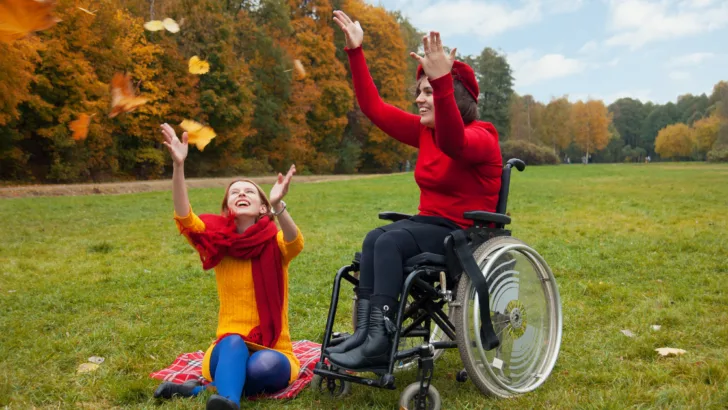
The benefits of adaptive hiking are numerous and include being in nature, getting exercise, and feeling a sense of accomplishment after finishing a hike. It is a great way to improve physical and mental health, reduce stress, and increase social interaction. With the right resources and support, adaptive hiking can be a life-changing experience for individuals with disabilities or physical limitations.
Key Takeaways
- Adaptive hiking is a form of outdoor activity that enables people with disabilities or physical limitations to enjoy nature and the benefits of hiking.
- There are different types of adaptive hiking, including using assistive technology or other personal supports to access parks or mountain trails.
- The benefits of adaptive hiking include improving physical and mental health, reducing stress, and increasing social interaction.
What is Adaptive Hiking?
Adaptive hiking is a type of hiking that aims to make the activity accessible to people with disabilities or physical limitations. It involves making adjustments to the hiking experience to accommodate individuals with diverse needs. The goal is to enable everyone to take advantage of hiking’s benefits, including being in nature, getting exercise, and feeling a sense of accomplishment after finishing a hike.
Adaptive hiking trails have characteristics that allow individuals with physical disability to enjoy hiking on them. These characteristics relate to the surface firmness, obstacles, grade, and cross slope of the trails. Some trails may have a smooth surface, while others may have a rougher surface for better traction. The trails may also have fewer obstacles or be wider to accommodate wheelchairs or other mobility devices.
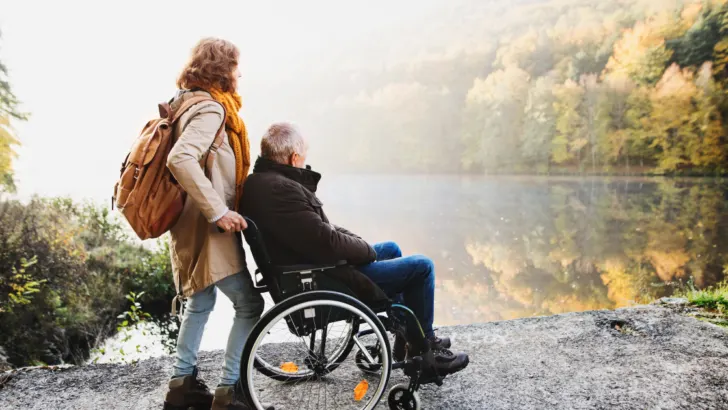
Adaptive hiking can benefit individuals with physical or cognitive disabilities by providing opportunities to connect with nature, improve physical health, and boost mental well-being. It can also be a social activity, allowing individuals to engage with others and build a sense of community.
Overall, adaptive hiking is a great way to enjoy the outdoors and connect with nature, regardless of one’s physical abilities. With the right adjustments and accommodations, everyone can experience the joys of hiking.
Related Posts:
Types of Adaptive Hiking
When it comes to adaptive hiking, there are several ways to modify a trail or use assistive devices to make it accessible for individuals with disabilities. In this section, I will discuss three types of adaptive hiking: trail modifications, assistive devices, and guided hikes.
Trail Modifications
Trail modifications are changes made to the trail itself to make it more accessible for individuals with disabilities. Some common trail modifications include:
- Widening the trail to accommodate wheelchairs or other mobility devices
- Adding handrails or guardrails for safety
- Creating switchbacks to reduce the steepness of the trail
- Smoothing out the trail surface to reduce bumps and obstacles
These modifications can make a significant difference in the accessibility of a trail, allowing individuals with disabilities to enjoy the beauty of nature.
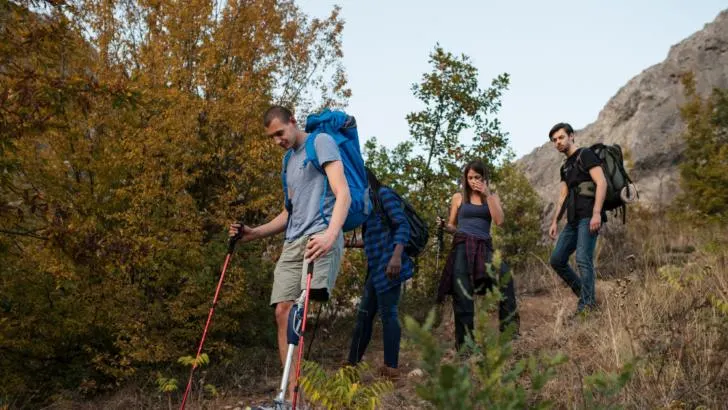
Assistive Devices
Assistive devices are tools and equipment that can help individuals with disabilities navigate a trail. Some common assistive devices include:
- Wheelchairs or mobility scooters
- Hiking poles or walking sticks
- Braille maps or audio guides for individuals with visual impairments
- Hearing aids or other communication devices for individuals with hearing impairments
Using assistive devices can make hiking more comfortable and safe for individuals with disabilities, allowing them to fully participate in the activity.
Guided Hikes
Guided hikes are led by experienced hikers or guides who are familiar with the trail and can help individuals with disabilities navigate it safely. These guides can provide assistance with trail modifications and assistive devices, as well as offer information about the natural environment and history of the area.
Guided hikes can be a great way for individuals with disabilities to experience the beauty of nature while also learning about the environment and connecting with others who share their interests.
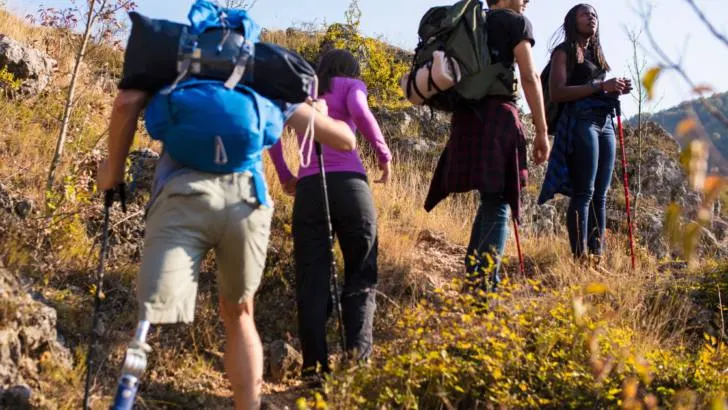
Overall, there are many ways to make hiking accessible for individuals with disabilities. By modifying trails, using assistive devices, and participating in guided hikes, individuals with disabilities can enjoy the benefits of hiking and connect with the natural world.
Benefits of Adaptive Hiking
The benefits of adaptive hiking are well-documented, showcasing positive impacts on physical and mental health, social interaction, and fostering a sense of accomplishment. Here are some of the benefits:
Increased Physical Activity
Adaptive hiking provides a unique opportunity for individuals with disabilities or limited mobility to engage in physical activity and enjoy the outdoors. Hiking can help improve cardiovascular health, strengthen muscles, and increase flexibility and endurance. With adaptive equipment and modifications to trails, individuals can hike at their own pace and distance, making it a great way to stay active and improve overall health.
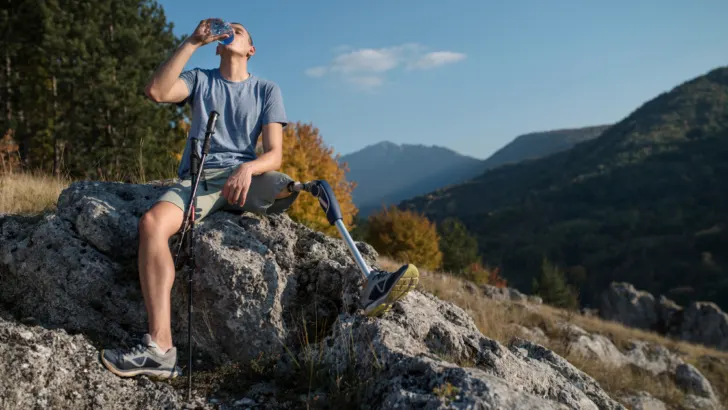
Improved Mental Health
Spending time in nature has been shown to have a positive impact on mental health, and adaptive hiking is no exception. Hiking can reduce stress and anxiety, improve mood and mental clarity, and increase self-confidence and self-esteem. It provides a chance to disconnect from the stresses of daily life and connect with nature, leading to a sense of calm and relaxation.
Increased Social Interaction
Adaptive hiking can also provide opportunities for social interaction and connection. Hiking with a group or a partner can create a sense of camaraderie and shared experience. It can also be a chance to meet new people and form new friendships. Being outdoors and active can also lead to more positive social interactions and a greater sense of belonging.

Increased Sense of Accomplishment
Adaptive hiking provides a unique sense of accomplishment, as individuals overcome physical and mental challenges to reach their hiking goals. Hiking can be a great way to set and achieve goals, both big and small. It can also provide a sense of empowerment and independence, as individuals navigate the outdoors and overcome obstacles.
In conclusion, adaptive hiking offers a wide range of benefits for individuals with disabilities or limited mobility. From increased physical activity to improved mental health, social interaction, and sense of accomplishment, adaptive hiking can have a positive impact on overall well-being.
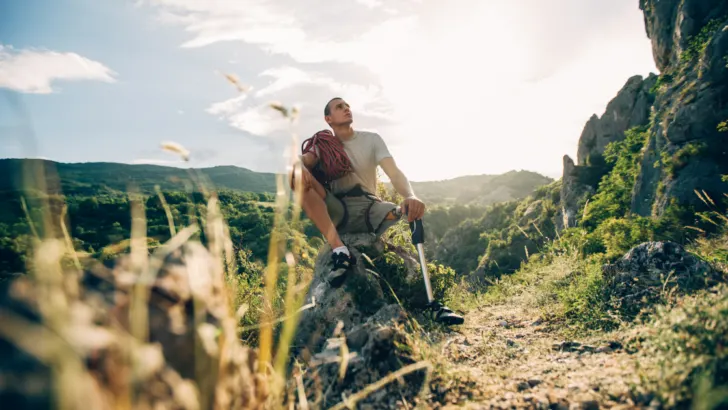
Resources for Adaptive Hiking
If you’re interested in adaptive hiking, there are many resources available to help you get started. Here are some websites, organizations, and local groups that can provide valuable information and support:
Websites
- American Hiking Society (https://americanhiking.org/): This website is a great resource for all things hiking-related. They have a section on adaptive hiking that provides information on accessible trails, gear, and more.
- Disabled Hikers (https://disabledhikers.com/): This website is run by a disabled hiker who provides information and resources for other disabled hikers. They have a section on adaptive hiking that includes trail reviews, gear recommendations, and more.
Organizations
- National Center on Accessibility (https://www.ncaonline.org/): This organization provides information and resources on accessibility in outdoor recreation. They have a section on adaptive hiking that includes information on accessible trails and facilities.
- Paralyzed Veterans of America (https://www.pva.org/): This organization provides support and resources for veterans with spinal cord injuries and other disabilities. They have a section on adaptive sports, including adaptive hiking.
Local Groups
- Accessible Trails (https://www.accessibletrails.com/): This website provides information on accessible trails throughout the United States. You can search for trails by state and find information on trail conditions, accessibility features, and more.
- Adaptive Adventures (https://adaptiveadventures.org/): This organization provides adaptive sports and outdoor recreation programs for people with disabilities. They have programs in several states, including adaptive hiking programs.
Related Posts:
Conclusion
In conclusion, adaptive hiking is a fantastic way to make the great outdoors accessible to everyone, regardless of physical ability or limitations. It is a way to connect with nature, get exercise, and enjoy the many benefits of being outside.
Through this article, I have learned that adaptive hiking involves making adjustments to the hiking experience to accommodate individuals with diverse needs. This can include modifying equipment, such as backpacks or wheelchair tires, and communicating with other trail users about their expectations of the trail.
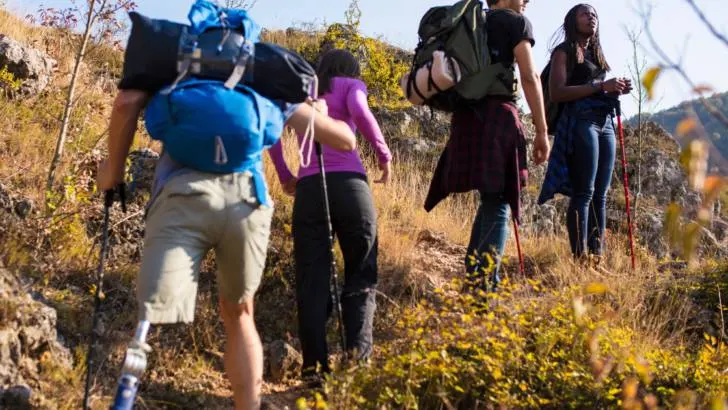
I have also discovered that adaptive hiking goes by different names depending on the region, culture, or organization. Some common terms used to describe adaptive hiking include inclusive hiking, accessible hiking, barrier-free hiking, wheelchair hiking, and adaptive outdoor recreation.
Overall, adaptive hiking is a wonderful way to experience the beauty and majesty of the outdoors, and it is heartening to know that efforts are being made to make it accessible to as many people as possible. By making small adjustments and accommodations, we can all enjoy the many benefits of hiking and being in nature.
Frequently Asked Questions
What is adaptive hiking and how does it differ from traditional hiking?
Adaptive hiking is a form of hiking that caters to individuals with physical, sensory, or cognitive challenges. It involves using specialized equipment and techniques to overcome obstacles on the trail and make hiking accessible to everyone. Unlike traditional hiking, adaptive hiking is inclusive and emphasizes the belief that the joy of hiking should be accessible to everyone, regardless of physical limitations.
What kind of equipment is needed for adaptive hiking?
The equipment needed for adaptive hiking depends on the individual’s specific needs and abilities. Some common equipment used in adaptive hiking includes hiking poles, trekking wheelchairs, all-terrain crutches, and TrailRiders. The equipment used is designed to provide support and stability on the trail and make hiking more accessible to individuals with physical disabilities.
What are some popular adaptive hiking trails?
There are many adaptive hiking trails available across the country, including the Pacific Crest Trail, the Appalachian Trail, and the Colorado Trail. These trails are designed to be accessible and inclusive, with features such as wider paths, smoother surfaces, and gentle slopes. Many national parks and recreational areas also offer adaptive hiking trails.
How can I get involved in adaptive hiking?
If you’re interested in getting involved in adaptive hiking, there are many organizations and groups that offer adaptive hiking programs and events. These organizations can provide equipment, training, and support to help you get started. Some popular organizations include Paradox Sports, Disabled Sports USA, and the National Ability Center.
What are some benefits of adaptive hiking?
Adaptive hiking offers many benefits, including physical, mental, and emotional benefits. It can help improve strength, endurance, and balance, as well as reduce stress and anxiety. Adaptive hiking can also provide a sense of accomplishment and empowerment, as individuals overcome obstacles and challenges on the trail.
What is the TrailRider and how is it used in adaptive hiking?
The TrailRider is a specialized hiking chair designed for individuals with mobility impairments. It features a single wheel in the front and two large wheels in the back, making it easy to navigate over rough terrain. The TrailRider is typically used with the help of a team of volunteers, who help guide and support the chair over obstacles on the trail.
